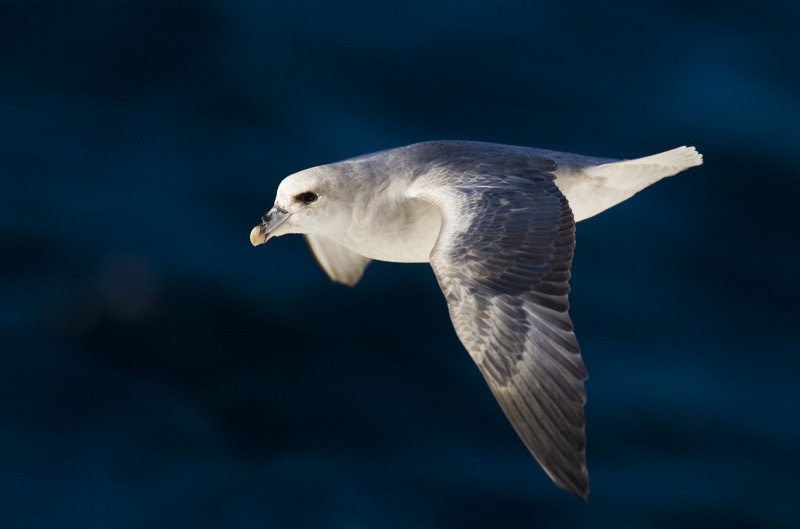This article is reprinted from The Circle 4.14. Dr. Nengye Liu is a Marie Curie Fellow at School of Law, University of Dundee, United Kingdom. His current research focuses on the European Union and the protection of marine biodiversity in the Arctic.
The Arctic is home to more than 21,000 known species of highly cold-adapted mammals, birds, fish, invertebrates, plants and fungi including lichens, plus tens of thousands of microbial species. But climate change is inducing an ecosystem regime shift in some areas, resulting in a very different Arctic species composition.
Protected areas have been described by the Convention on Biological Diversity as an important means to achieve conservation gains.
Summer temperatures in the Arctic in recent decades have been warmer than at any time in the past 2000 years, with the region warming twice as fast as the rest of the planet. Arctic summer sea ice cover, particularly the amount of multi-year ice, is decreasing at an accelerating rate leading to increased human activities such as fishing, navigation and extractive industries within this fragile environment.
Protected areas have been described by the Convention on Biological Diversity (CBD) as an important means to achieve conservation gains. The IUCN defines a marine protected area (MPA) as: “any area of the intertidal or sub tidal terrain, together with its overlying water and associated flora, fauna, historical and cultural features which has been reserved by law or other effective means to protect part, or all, of the enclosed environment”. The Convention is in agreement that by 2020, at least 10 per cent of the world’s coastal and marine areas, especially areas of particular importance for biodiversity and ecosystem services, should be conserved through effectively and equitably managed, ecologically representative and well-connected systems of protected areas and other effective area-based conservation measures. As of 2010, 11 per cent of the Arctic, about 3.5 million km2, has protected status in 1127 protected areas. Over 40 per cent of Arctic protected areas have a coastal component but for the majority of these areas it is not possible to determine the extent to which they incorporate the adjacent marine environment. Therefore, the question is how to establish MPAs in the Arctic Ocean.
In 2008 in Bonn, Germany, the 9th meeting of the Conference Parties of the CBD (COP 9) adopted a set of seven scientific criteria to identify ecologically and biologically significant areas (EBSAs) in the global marine realm. These include:
- Uniqueness or rarity
- Special importance for life-history stages of species
- Importance for threatened, endangered or declining species and/or habitats
- Vulnerability, fragility, sensitivity, or slow recovery
- Biological productivity
- Biological diversity
- Naturalness
In 2010, COP 10 noted that the application of the EBSA criteria is a scientific and technical exercise, that areas found to meet the criteria may require enhanced conservation and management measures, and that this can be achieved through a variety of means, including MPAs and impact assessments. A regional EBSA Workshop for the Arctic took place in Helsinki, Finland from 3-7 March 2014. The Workshop described 11 areas meeting the EBSA criteria, of which 9 areas were within the national jurisdiction of Russian Federation. According to United Nations Convention on the Law of the Sea (UNCLOS), waters within 370 kilometres (200 nautical miles) of shore make up exclusive economic zones (EEZs) of Arctic coastal states (US, Russia, Canada, Norway and Denmark/Greenland). Within EEZs, only coastal states are entitled to establish MPAs. One example is the U.S., which has adopted a closure of commercial fishing in its waters north of the Bering Strait until there is appropriate scientific understanding and management in place. The moratorium prohibits commercial fishing in all marine areas in the American EEZs of the Chukchi and Beaufort seas.
But beyond EEZs there are high seas in the Arctic Ocean. To date, there is no international legal regime that provides for cross-sector MPAs on the high seas. The lack of a regime addressing biodiversity in areas beyond national jurisdiction has already been identified by the international community and, during the UN Conference on Sustainable Development (Rio+20), states committed, on an urgent basis, to addressing the issue. The agreement to act included a commitment to taking a decision on the development of an international instrument under UNCLOS, before the end of the sixty-ninth session of the UN General Assembly to address biodiversity in areas beyond national jurisdiction. If the new implementing protocol of the UNCLOS can be adopted in the foreseeable future, it will provide a solid legal basis for the establishment of MPAs in the Arctic high seas, particularly in the central Arctic Ocean.
